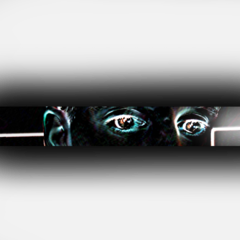-
Posts
13,887 -
Joined
-
Last visited
Reputation Activity
-
 ShearMe got a reaction from Psittac in What is this piece of audio equipment?
ShearMe got a reaction from Psittac in What is this piece of audio equipment?
A bunch of random effects. If you don't have the speakers in a conditioned room, they may help bounce the sound around differently and potentially improve the sound.
-
 ShearMe got a reaction from pat_stone in No Wireless with my EPOS GSX 1000 DAC. Will it ever end?
ShearMe got a reaction from pat_stone in No Wireless with my EPOS GSX 1000 DAC. Will it ever end?
I don't know what to tell you man... practically the only wireless audio spec on the market is bluetooth, and it doesn't have the bandwidth for stereo + microphone return. Gaming headsets all use proprietary formats. You're fat outta luck if you want an audio switching device with analog and wireless outputs.
Have you tested any third party software for ease of switching sources? https://audioswit.ch/er
-
.png) ShearMe reacted to yeahyeahOK in Opinions on Schiit?
ShearMe reacted to yeahyeahOK in Opinions on Schiit?
First of all, I've never posted here and really like the Linus videos I've watched on YouTube.
Second, Schiit offers a lot of bang for the buck for the budget audiophile. I have two Schiit headphone amps (first generation Jotunheim and the latest Vali), and I also have their phono pre-amp and Loki equalizer. I've got much audiophile enjoyment out of all of it.
If you're considering a Schiit product, do your research of course and read reviews to see if its for you. Calling their stuff "crappy" and "garbage" is ridiculous.
I understand this is an old thread, but it's never too late to correct what I find to be a ridiculous opinion.
-
 ShearMe got a reaction from Psittac in what's the deal with RF headphones?
ShearMe got a reaction from Psittac in what's the deal with RF headphones?
what bluetooth headphones are you using with that much delay? Latency is undetectable on my brand-name products
The RF headphones you're describing are kind of a niche and unpopular product simply because of the base station requirement. They don't get much development in the modern age,
-
 ShearMe got a reaction from cmndr in about noise floor
ShearMe got a reaction from cmndr in about noise floor
The noise floor of most recordings is going to be higher than that of almost any off the shelf equipment you buy today. Most humans can't hear past a 75dB SnR, and typical hardware SnR is about 120dB.
This video has SnR examples @ 32 minutes:
-
 ShearMe reacted to listener in The question that's been asked a thousand times. Which 600 series headphone would fit me best?
ShearMe reacted to listener in The question that's been asked a thousand times. Which 600 series headphone would fit me best?
Anyone recommending any Beyerdynamic headphone over a Sennheiser HD600 should be treated as a dubious source of information. They’re likely solely indexing for fake detail achieved through poorly controlled treble and “moar bass.” The “veil” most speak of when referring to HD6x0 is actually because of it’s lack of errant treble peaks, something less experienced people enjoy because… well, they think it’s more detailed or exciting. But neutral it is not.
TL;DR In this price range yr not going to get top-tier technical performance, so might as well go for the thing that has the least compromises. In my and many audiophiles’ opinion, HD600/650 easily best its competition in that respect.
-
 ShearMe reacted to H713 in The question that's been asked a thousand times. Which 600 series headphone would fit me best?
ShearMe reacted to H713 in The question that's been asked a thousand times. Which 600 series headphone would fit me best?
From my own experience, "bloat" and "shouty" are often terms used to describe more than just a frequency response issue. Often bloat is a resonance (and therefore energy storage) between 100 and 400 Hz, while shouty tends to be that in the 1 - 4 kHz range.
Trying to find good information regarding the performance of a particular audio device is tricky, and just because someone reviews audio equipment doesn't mean their information is useful. "Audiophile jargon" is often misinterpreted and useless, and unless there is a *massive* issue (and none of the stuff talked about in this thread has any massive issues), there is a good chance that any two audio reviews will have differing opinions.
For speakers, AudioScienceReview or Erin's Audio Corner provide some of the best measurement data available, and it's *rare* that a speaker that looks good on their test setup sounds terrible. The trick is learning how to read the data yourself, as it is not unexpected that you may come to different conclusions from the reviewer.
For any electronics, my first choice is to get it in my hands and run tests on it myself. A schematic is a really big help here, since with that it is possible to pinpoint inherent issues without even powering it up. A careful look at the PCB layout is useful here too. Failing this, the next best is the AudioScienceReview's measurement run, which is a good set of AP data, but doesn't include quite as much detail as I like, especially when it comes to power amplifiers.
Headphones are trickier. I have, over time, come to trust that Amir knows how to measure equipment pretty well, and it's fairly rare that I catch a mistake, so I'm willing to place some (limited) amount of trust in those measurements.
I used to place a lot more trust in subjective reviews (and anything that isn't based on lab testing is that) than I do now. Over time I've come to realize just how easy it is to trick oneself, and anyone who thinks they're immune to it is lying or delusional.
-
 ShearMe got a reaction from e22big in Can you use 3.5 mm 4 poles balanced plug with PC front panel headphone jack?
ShearMe got a reaction from e22big in Can you use 3.5 mm 4 poles balanced plug with PC front panel headphone jack?
Balance signals require two signal conductors per audio channel. Standard non-balanced consumer audio requires one signal conductor per audio channel, plus one ground for all.
Thus, a 4-pole connector can carry 2 balanced signals (stereo) OR 3 unbalanced signals (stereo + mic)
-
 ShearMe got a reaction from RMTM in PC Audio (ALC4080 + Savitech SV3H712 AMP)
ShearMe got a reaction from RMTM in PC Audio (ALC4080 + Savitech SV3H712 AMP)
There could be an argument for 24-bit 192000Hz being more favorable, but you're unlikely to have source material for either anyway.
-
 ShearMe got a reaction from adamblastia in Sleeping in headphones, earbuds, IEMs, etc.
ShearMe got a reaction from adamblastia in Sleeping in headphones, earbuds, IEMs, etc.
Kokoon makes products specifically for sleeping comfort - https://kokoon.io/
-
 ShearMe got a reaction from NinJake in Weird Problem
ShearMe got a reaction from NinJake in Weird Problem
First I want to point out that in Windows, Bluetooth headsets appear as two different audio devices and each has different functionality. One is usually called "Headset" with the Hands-free label and the other "Headphones" with the Stereo Label
The "Hands-Free AG Audio" is a built-in Windows generic driver and you cannot remove it. Using this device will only give you mono audio through the headphones, because Bluetooth needs the other channel of audio for the microphone. You should also have a "Stereo" driver for normal headphone operation. You cannot use the microphone in stereo mode. Next I want you to check your default devices. Open a command prompt and type in mmsys.cpl to open the sound control panel. Windows will often automatically set the stereo driver as the default device, but sometimes sets the default communication device as the hands-free driver. You want to select the driver you wish to use, and then click the Set Default button at the bottom right to make the same driver be used for both situations. https://www.mcbsys.com/blog/2018/09/set-default-communications-device-in-windows-10-1803/
After that, you might also need to ensure you have the correct device/driver selected in your application. Voice chat applications like Discord, zoom, teams, and even windows game bar have their own audio settings which often ignore system defaults. If you've got the opposite driver set in the application as what's chosen in the sound control panel, you'll often end up with no audio.
Quick note: Most people change their audio by clicking the sound icon in the taskbar > arrow next to current device > choose new device. This ONLY changes the default audio device, NOT the default communication device.
-
 ShearMe got a reaction from e22big in Can we really can't tell the different between hires and standard CD or MP3 audio?
ShearMe got a reaction from e22big in Can we really can't tell the different between hires and standard CD or MP3 audio?
Some artists/producers will also provide a better master to higher end services like Tidal so that the "stream quality" becomes irrelevant. Same thing that's been done to Vinyl vs CDs for decades.
Edit: just seen that someone already mentioned this/ GG no re
-
 ShearMe reacted to Origami Cactus in Can we really can't tell the different between hires and standard CD or MP3 audio?
ShearMe reacted to Origami Cactus in Can we really can't tell the different between hires and standard CD or MP3 audio?
You have to keep in mind that some songs get remastered for Tidal, so they take the song files and make it more 3D, take more advantage of higher res audio with different effects etc.
If you take the same exact mastering of a song, and compare MP3 320kbps, and FLAC, I basically guarantee you won't notice a difference, even on good headphones.
-
 ShearMe reacted to IPD in Can we really can't tell the different between hires and standard CD or MP3 audio?
ShearMe reacted to IPD in Can we really can't tell the different between hires and standard CD or MP3 audio?
320khz compression will sound markedly better than 96khz--even to the untrained ear. The diminishing returns--for me, is between the quality of 320khz mp3 and uncompressed studio audio. I'm no a discriminating audiophile though, ymmv.
And yes, there's a difference between a song that was recorded--true to the studio--and one that has been forced into equalizing loudness. In the latter case, the "texture" of the music is gone. And that doesn't matter what compression you have on either one. It's the reason why many people will tell you music sounded better BITD; back before they started forcing every instrument to be equally loud.
-
 ShearMe reacted to Fragment323 in Review: Sony LinkBuds
ShearMe reacted to Fragment323 in Review: Sony LinkBuds
Hi, someone else alerady answered me beforo you did (there was small timeframe for that discount, I needed answer fast, so i made topic in general.
For anybody that is wondering the same, and for future reference: They do works without the case. Pairing button works only when buds are in case, so all communication is via pins.
Thanks anyway.
-
 ShearMe got a reaction from 675409 in Audio source and motherboard/case plugs.
ShearMe got a reaction from 675409 in Audio source and motherboard/case plugs.
Do you mean to say you do not know how to switch outputs in Windows operating system?
Windows 10:
Windows 11:
... Or do you mean to say this is not functioning properly?
First thing to check is the sound control panel. https://orhelp.osu.edu/support/index.php?/Knowledgebase/Article/View/223/41/How-to-manage-Sound-settings-in-Windows-10
-
 ShearMe got a reaction from NinJake in Single set of speakers for two different computers?
ShearMe got a reaction from NinJake in Single set of speakers for two different computers?
You should use a proper mixer, which has resistors to prevent one source from grounding out on the other's output circuit.
https://www.amazon.com/TENEALAY-powered-control-passive-X21/dp/B09WDMYYBP
-
 ShearMe got a reaction from cottontails2 in Single set of speakers for two different computers?
ShearMe got a reaction from cottontails2 in Single set of speakers for two different computers?
You should use a proper mixer, which has resistors to prevent one source from grounding out on the other's output circuit.
https://www.amazon.com/TENEALAY-powered-control-passive-X21/dp/B09WDMYYBP
-
 ShearMe reacted to H713 in Headphone recommendations: replacing my Audio-Technica ATH-M40x headphones | ~$300
ShearMe reacted to H713 in Headphone recommendations: replacing my Audio-Technica ATH-M40x headphones | ~$300
HD280s are one of the few headphones that I cannot get to sound right no matter what I try. Out of the box they're marginally less unpleasant than the MDR7506s (though the HD280s grip your head like a vise), but I have had way more luck EQing MDR7506s (mind you, the MDR7506 is a turd no matter what you do to it) than I have the HD280s.
The best closed-back headphone that I personally have heard is the AKG Samsung K371. To my ears, it's a pretty damn good headphone.
-
 ShearMe reacted to OfficialTechSpace in 2.1ch Audio Setup Help
ShearMe reacted to OfficialTechSpace in 2.1ch Audio Setup Help
In that case you'd take that optical out, feed that into a DAC, and then output balanced or unbalanced cables from there to the amp. That'd be the ideal setup, and a much cleaner output.
-
 ShearMe reacted to RONOTHAN## in Good deal?
ShearMe reacted to RONOTHAN## in Good deal?
For $60 I'd go for it. It's not an incredibly good mic or anything, but for effectively $30 it's hard to go wrong. The headset is a gaming headset, it's not gonna compete with the ranks of Sennheiser HD600s or something like that, but for Warzone it should be just fine.
As for 7.1, you can experiment with it, but odds are you're just gonna leave it off. IIRC that headset has a simulated 7.1 setup, so it mostly just widens the sound stage and makes everything sound a little more distant. I don't have first hand experience with that one in particular, but with the other headsets I've seen that do a similar setup it can make some games better, but in FPS games (specifically CS:GO, what I know best, never played warzone) it threw off my directional awareness and made it a bit harder to determine where footsteps were coming from. Some places it's good, and in Warzone it might be awesome, but don't expect it to be a game changer and leaving it to stereo is likely the better play.
-
 ShearMe reacted to 675409 in Good deal?
ShearMe reacted to 675409 in Good deal?
What headset would you recommend then for around the same price? It would also need a mic
-
 ShearMe reacted to Spuriae in Best place to get lossless wav music?
ShearMe reacted to Spuriae in Best place to get lossless wav music?
I encourage anyone who thinks there is a significant difference in sound quality between high bitrate AAC/opus and lossless to try running an ABx test between the two (actually blind- no peeking!). Not because there isn't a difference, but because it's a good reminder of how tiny the differences really are. They tend to be difficult to identify even under ideal circumstances.
Spotify and a 32 bit flac aren't equivalent to the difference between 720p and 8k; they're more akin to the difference between 4k and 8k – on a laptop screen. Curiously, there are issues significantly more audible than lossy compression, like audio watermarking, that rarely get brought up in audio streaming quality debates.
The NPR test is a good test of first impression. There is a way to game it using the sample load times though, and the setup isn't well-suited for statistically significant results. Still, it does a good job at illustrating how difficult it is to identify high bitrate compression artifacts.
I agree that the transducer and enclosure is always the most audible part of the signal path.
However, multiple lossless audio streaming services cost less than $15/month, so it doesn't really cost extra to switch to one. It's really more a feature/library comparison.
This isn't quite right. You can hear well below the noise floor, since hearing is based on energy detected in frequency bins (similar concept to a Fourier transform) and noise is broadband. For instance, here is a 5 second long file with a 1kHz sine wave played 20dB(rms) below white noise. The sine wave cuts off 3 seconds in so you can confirm that you can actually hear the tone.
1k20dbunderwhite.wav Here is a 4kHz sine 35dB(rms) below brown noise, cutting off at 3 seconds again.
4k35dbunderbrown.wav I have a 94dBSPL 1kHz sine microphone calibrator and an ear and cheek simulator made from an IEC711 coupler, ITU-T P.57 ear, and a slab of rubber with a hole cut into it. Calibrating my headphones' (HD650) level so that a full scale sine wave measured 92dBSPL, I was able to differentiate between a -89dBFS and -100dBFS 1kHz sine wave in an ABx shootout, but not a -100dBFS and -90dBFS sine wave, implying that my 1kHz hearing threshold at my desk (certainly >20dB background noise, since it has a PC on top) with open back headphones is ~3dBSPL.
Theoretically, not accounting for auditory masking, the max rms level would only need to be 99dBSPL for 96dB of dynamic range. This isn't as loud as it seems; after all, the average level may vary significantly throughout a song, by ~10dB between sections. The RMS level of a song (the applicable number for safety) is typically -15dBFS; a 99dBSPL peak song in practice is usually a more tolerable ~85dBSPL average.
For a more extreme example, the Interstellar soundtrack contains songs where much of the track is around -50dB while the peaks are just below clipping. In these cases the dynamic range in the quieter sections is "only" <50dB in an undithered 16 bit file. There is a good argument to be made, however, that listening loudly enough to appreciate that much dynamic range is unsafe regardless.
This is all true. Here is a one second test track composed of a full-scale 10kHz sine and a descending sine chirp around 1kHz exactly 96dB quieter than the 10kHz sine. It sounds a bit like a distant car alarm. The chirp is audible at a 107dBSPL playback level in both the 16 bit and the 24 bit file (that's what I tested at - it's certainly still audible a few dB lower, but I'm not interested in checking the exact threshold for safety reasons). I cannot tell the two apart by ear. Perhaps I would if I played it more loudly, but I don't feel safe pushing those limits.
24bittest-16.wav
24bittest-24.wav
Here you can see the spectrum graph. Spectral analysis can be iffy with files this short: see the burst of aliasing at the start. In both the 24 and 16 bit files, the faint purple curve at the bottom is the chirp. Note that it is still present despite being below what a 16 bit file would normally be expected to reproduce. Also note the high frequency noise in the 16 bit file (from the dithering). I am unable to hear this.
Humans can't hear tones above 20kHz, but we can use temporal cues faster than 1/20kHz to determine timing.
Here is a study on the audiblity of clicks (stimuli significantly shorter than the period of a 20kHz wave): https://asa.scitation.org/doi/abs/10.1121/1.1912374. Participants were able to distinguish 10µs dropouts (equivalent to a single sample at 100kHz) between stimuli. I don't have a non-oversampling DAC, so I cannot verify the results myself.
More importantly, timing differences between channels are a significant cue in positional audio. http://www.socsci.uci.edu/~saberi/saberiandperrott1990b.pdf. Thresholds of audibility extend below 20µs, implying that some audible left-right spatial information may be lost for certain transients at sample rates 48kHz and below.
I ran a similar binaural test by creating two files at 192kHz. Each one has a two sample long pulse in each ear. In one file, the left click occurs 2 samples (~10µs) before the right one; in the other file, the right click occurs 2 samples before the left one. The tracks are shorter than a single sample at 44kHz.
leftclick.wav rightclick.wav
In blind testing I can tell them apart, though this one took ~50 practice comparisons before I was able to reliably distinguish them. Because the spectral energy of a two sample impulse is low, you may need to turn your volume WAY up to even hear the clicks. The files may also simply not play properly in some environments.
Not that this is necessarily worth caring about even if it is audible. I certainly don't mind the soundstage perceptually being a few millimeters offset when listening to music. I can't imagine being able to tell which version of a track is the "correct" one based on this information; only that they are different.
https://en.wikipedia.org/wiki/Nyquist–Shannon_sampling_theorem
40kHz is the sample rate required to record 20kHz information. The 20kHz export example has a 10kHz audible cutoff.
-
 ShearMe reacted to mariushm in Getting USB Speakers To Work Via Monitor?
ShearMe reacted to mariushm in Getting USB Speakers To Work Via Monitor?
The monitor receives the video and audio through HDMI and the processor on the circuit board inside can make the audio available for headphones output or for basic speakers if the circuit board has a basic audio amplifier inside).
The USB ports on the back are usually completely independent from the display processor circuit board, which decodes the HDMI signal...
There's a USB hub chip there, you use a USB cable to make connection between computer and monitor, and then the HUB chip inside the monitor creates multiple USB ports on the monitor. The idea is to connect mouse and keyboard to monitor, so you have fewer cables going all the way from desk to the back of PC.
The monitor isn't a usb host , it doesn't detect that you inserted a usb sound card (the speakers/headphones' internal sound card which converts the digital signal sent through usb into analogue stereo sound for headphones), so it can't route the digital audio into the usb port and therefore into your speakers.
Sounds like you just need better aux cable (better shielded one) and potentially you should have both devices plugged in the same circuit (same wall sockets) to reduce the static / hissing.
-
 ShearMe got a reaction from Filingo in What to search for to find headphones wires?
ShearMe got a reaction from Filingo in What to search for to find headphones wires?
Any wire will do - just re-use some from the cable you cut off. It's hard to find wire as thin as what internal cable use online. Just remember that the insulation is usually paint, so you need to scrape or burn it off before you solder.









